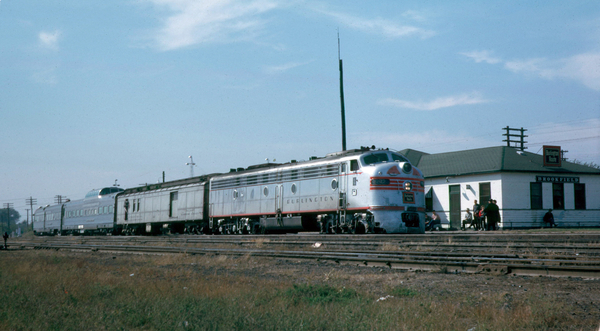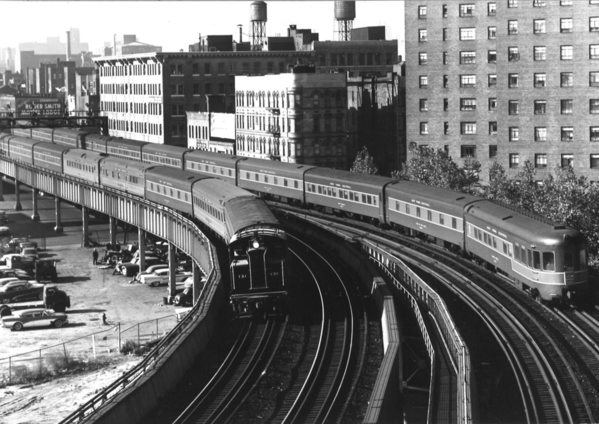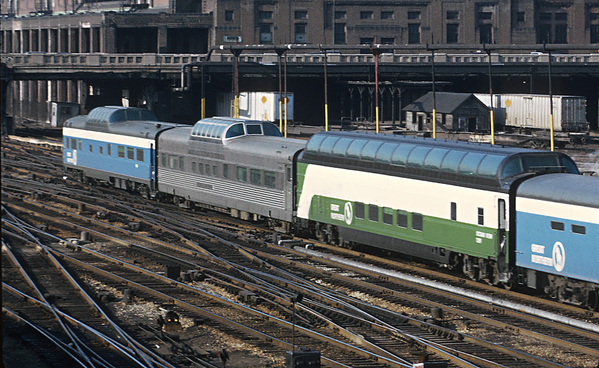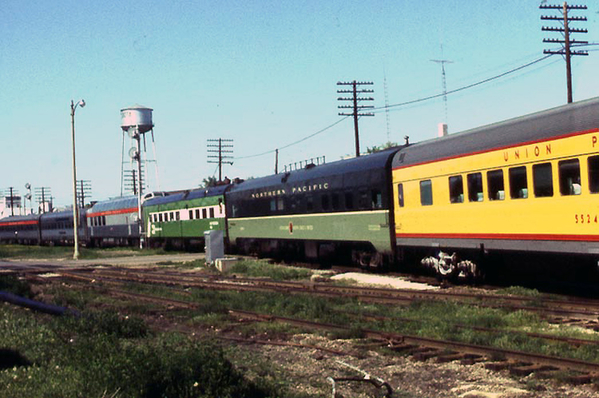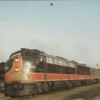The following information on prototypical railroad consists may be of interest to you:
When building freight consists for your favorite road, it is fun to know what the mix of cars would have been in a particular train. This information is highly era-dependent, and I’m most familiar with the 1930’s to 1950’s. If your interests lie in modern railroading, you’ll need to rely on someone else.
Overall, the US freight car fleet in 1948 had the following percentages:
36% Boxcars (mostly single-door 40-foot)
31% Hopper Cars
8% Tank Cars
7% Refrigerator Cars
7% Gondolas
3% Stock Cars
3% Flat Cars
3% Automobile Boxcars (mostly double-door 50-foot)
1% Covered Hoppers
1% Other
Some large adjustments must be made for different regions of the country. For example, most of the hoppers were on eastern lines like the PRR, N&W, VGN, B&O, C&O, LV, etc. Western roads had only about 10% of the hoppers during this railroading era. Let’s ignore seasonal shipments such as fruit, vegetables, and cattle and focus on typical railroad consists.
Now, what road names do you include in your consist? How many “home road” cars should there be? It depends a lot on the railroad. I have some information listed below from 1944 that details the percentages of the home road and other road cars that were mixed in with the following railroads.
Erie, Wabash, CNJ, ACL, Southern, Rock Island, SP, and MoPac ran a mix of 25-30% home and 70-75% others.
D&H, B&O, IC, C&NW, CB&Q, and UP ran a mix of 35-40% home and 60-65% others.
PRR, Milwaukee Road, GN, NP, ATSF, and D&RGW ran a mix of 45-55% home and 45-55% others.
The champion is N&W, which ran 78% of its home road equipment. The runners up in second and third place are C&O and L&N with 68 and 66% home road freight cars respectively. At the other end of the spectrum are NKP and B&M with 16 and 17% home road cars. Boston & Albany came in last with only 5 percent (although technically NYC cars should probably also be counted as home road).
About three-fourths of the “other” cars should be from roads that interchanged with your railroad. The right regional mix of cars can really make your train look realistic.
If you primarily model one railroad, like I do with PRR, then freight car purchases can be made with the above data in mind. You can limit what you buy to the cars that will “fit” your region of the country and the time frame for the railroad (my railroad is circa 1953). You can buy less and yet have more fun.
Oh, by the way, in the steam era the Pennsylvania Railroad owned about 30% of the entire nationwide interchange fleet, so you cannot possibly go wrong with having some Pennsy on your roster (a shameless plug). B&O and C&O owned about another 35% of the nationwide interchange fleet, so they were widespread as well.
Now, just how long should that consist be? If there are grades on your railroad then the answer is, “Shorter than you think!” The C&O had to negotiate Cheviot Hill outside Cincinnati, which was at a 1.9-% grade westbound. C&O K-1, K-2, and K-3 Mikado’s, which were some of the heaviest 2-8-2s ever built, could each pull only 11 loaded 50-ton hoppers (these are the short 2-bay hoppers like those made by Weaver) up the grade. This required 50-car hopper trains to have five 2-8-2s, one or two on the lead, one or two cut in the middle, and two trailing pushers. These were not the only locomotives that labored as they pulled the steep grades common to the C&O railroad. Their mighty H6 2-6-6-2 articulated locomotives were only capable of pulling 16 to 17 loaded hoppers up the 2.5% grades common in the coal country of West Virginia. If you have 2% or 3% grades on your layout, then trains should not be very long unless they have multiple engines.
For diesel fans, most first-generation diesel units like the FT, F-3, FA, and RS-3, could only handle about two-thirds of the load of a typical 2-8-2 steamer. The FT diesels used by the Santa-Fe were rated at one loaded car per axle when traversing the Cajon Pass grade. This loading factor limited a FT ABBA set to hauling only 16-cars up its grade. Both steam and diesel motive power could handle about 3 or 4 times as many cars on level terrain as they could on a 2% grade.
If you are interested in replicating a prototypical consist on your layout, fewer cars in the train and less variety in road names can both be very realistic.
--Greg
P.S. Above information is courtesy of Bob Bartizek





